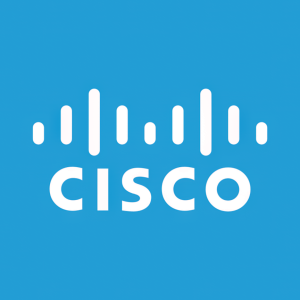Cisco's Sustainability 101: What Are Ecolabels?
- None.
- None.
By Klaus Verschuere
NORTHAMPTON, MA / ACCESSWIRE / March 18, 2024 / Do you feel a bit lost when people refer to certain environmental sustainability topics and aren't sure where to start when it comes to learning more? Sustainability 101 is a blog series that you can turn to for information about different environmental terms that may come up at work, during discussions with friends, and even at your annual holiday gathering.
Many companies want to show how they are making their products more sustainable. That's where ecolabels come in. Ecolabels are marks indicating that the products meet objective environmental and sustainability criteria. Ecolabels are placed on product packaging, on the product itself, accompanying documentation, or on other means such as web based.
According to the U.S. Environmental Protection Agency (EPA), ecolabels can help consumers and institutional purchasers quickly and easily identify those products that meet specific environmental performance criteria and are therefore deemed "environmentally preferable". Ecolabels can be owned or managed by government agencies, nonprofit environmental advocacy organizations, or private sector entities
Different types of ecolabels
According to Ecolabel Index, there are over 450 ecolabels available worldwide, covering different industry sectors (including carpets, cosmetics, or even coffee beans) and geographies. The International Organization for Standardization (ISO) has a series of international standards for environmental management that apply to ecolabels and divides them into categories. ISO 14020 classifies ecolabels as Type I, Type II, or Type III, as follows:
- Type I (ISO 14024), commonly known as ecolabelling schemes: This category covers third-party certification processes to verify product or service compliance with a pre-selected set of criteria.
- i.e.: THEY say my product has sustainability benefits.
- Type II (ISO 14021): This category covers self-declared ecolabels, based on objective standards, that may cover environmental claims.
- i.e.: I say my product has sustainability benefits.
- Type III (ISO 14025): The third category covers self-declared conformance to predetermined categories of parameters based on ISO 14040, but without conclusions on whether that conformity means the product has sustainability qualities.
- i.e.: Here are my results, it is up to YOU to judge if my product has sustainability benefits.
Type I ecolabels are considered comprehensive and ambitious. They are generally assigned to products that go beyond regulatory requirements, including in the areas of energy efficiency, resource consumption or greenhouse gas (GHG) emissions. These Type I ecolabels identify and promote products with reduced adverse impacts.
Ecolabels are not to be confused with an "energy" label, which is used to indicate the energy efficiency of a consumer product. In the European Union (EU), this energy label is mandatory for certain products such as refrigerators, washing machines or televisions and uses a scale from G (least efficient) to A+++ (most efficient) to indicate the energy efficiency of a product.
Ecolabels for electronic B2B equipment
Relevant ecolabels for electronic B2B equipment vary from focusing on energy only (80 PLUS®, ENERGY STAR®) to others that go further than this, by including more environmental and social aspects (EPEAT, TCO Certified, etc.).
1. 80 PLUS: A voluntary Type I certification program launched in 2004, intended to promote efficient energy use in power supply units (PSUs). The certification measures the energy efficiency at
2. ECMA 370: A Type II scheme that can be used by companies to declare if and which environmental attributes (such as recycling, reduction of hazardous substances, and energy consumption) are met and to show which measurement methods were applied for information and communication technology (ICT) and consumer electronics according to known standards, guidelines, and currently accepted practices.
3. ENERGY STAR: A voluntary program that is run and verified by the U.S. EPA and DOE. The program focuses on the energy consumption of products using standardized methods. It aims to help customers save money on their energy bills and reduce greenhouse gas emissions. There are ENERGY STAR programs available for, among other, enterprise servers, large networking equipment (LNE), small networking equipment (SNE) and Voice over Internet Protocol (VoIP) Phones.
4. EPEAT: A Type I ecolabel which is managed by the Global Electronics Council (GEC) based on criteria that evolve as sustainability evolves - measuring the social and environmental impacts of products from extraction to end of life. EPEAT certification is recognized by several governments and large businesses in their procurement practices.
5. TCO Certified: TCO Certified is a global sustainability certification for IT products. It includes both social and environmental aspects and helps purchasing organizations and the IT industry address the most important sustainability challenges connected to electronics, such as climate, circularity, hazardous substances, and supply chain responsibility. All criteria are mandatory and compliance with all criteria is independently verified by accredited experts.
6. EU Ecolabel: The European Union's (EU) ecolabel, managed by the European Commission and EU Member States, is a voluntary EU-wide Type I ecolabelling scheme. It covers many types of non-food products. The only product group covering electronics is electronic displays, and includes televisions, computer monitors, and signage displays.
7. Environmental Product Declaration (EPD): An EPD is a document that is based on ISO 14025 (Type III). As such, it is used to communicate the environmental performance of a product to stakeholders and provides quantified information about the environmental impact of a product or material over its lifetime. It is based on the Lifecycle Assessment (LCA) methodology, which evaluates the environmental impact of a product from raw material extraction to disposal.
Why are ecolabels important?
The public sector also uses ecolabels to encourage behavioral change. Due to Green Public Procurement rules, many government institutions prioritize procurement, where applicable, of products that meet specific sustainability requirements such as ENERGY STAR or EPEAT.
Ecolabels are also becoming more important given the global trend toward greater taxonomy frameworks and regulation regarding sustainability-related activities and Green Claims.
Lastly, under certain conditions, ecolabels may potentially be leveraged by stakeholders as a valid approach for self-regulation.
Where does Cisco stand regarding ecolabels?
At Cisco, we apply Circular Design Principles and strive to improve the energy efficiency of our products to reduce our environmental footprint. Ecolabels are one way to share some of the results of these efforts.
Ecolabels don't apply to everything Cisco sells, but - where applicable - Cisco's products are evaluated against the following Type I ecolabels: ENERGY STAR, EPEAT and 80 PLUS.
Cisco currently has products certified to the ENERGY STAR standard under the Enterprise Server and Telephones categories. We also have EPEAT-registered products under the Servers category listed in EPEAT´s online Registry.
And Cisco has power supply units (PSUs) certified to 80 PLUS listed on CLEAResults's online database. The majority of our PSUs have achieved Platinum status, and our UCS servers are rated Titanium.
We're continuously striving for transparency in our reporting on our environmental, social, and governance (ESG) initiatives, goals, and progress.
Learn more about our experience with ecolabels on our
View original content here.

View additional multimedia and more ESG storytelling from Cisco Systems Inc. on 3blmedia.com.
Contact Info:
Spokesperson: Cisco Systems Inc.
Website: https://www.3blmedia.com/profiles/cisco-systems-inc
Email: info@3blmedia.com
SOURCE: Cisco Systems Inc.
View the original press release on accesswire.com







